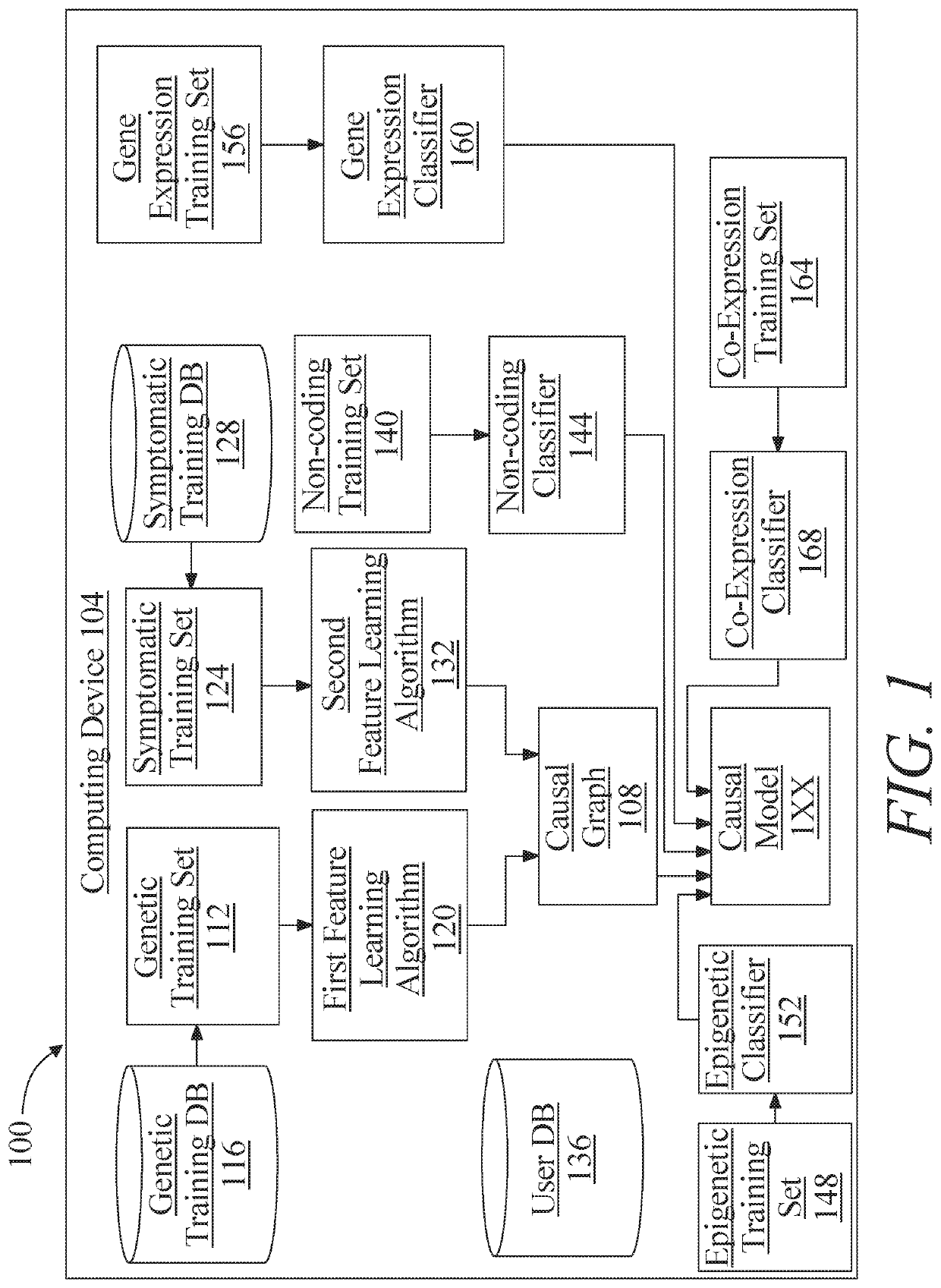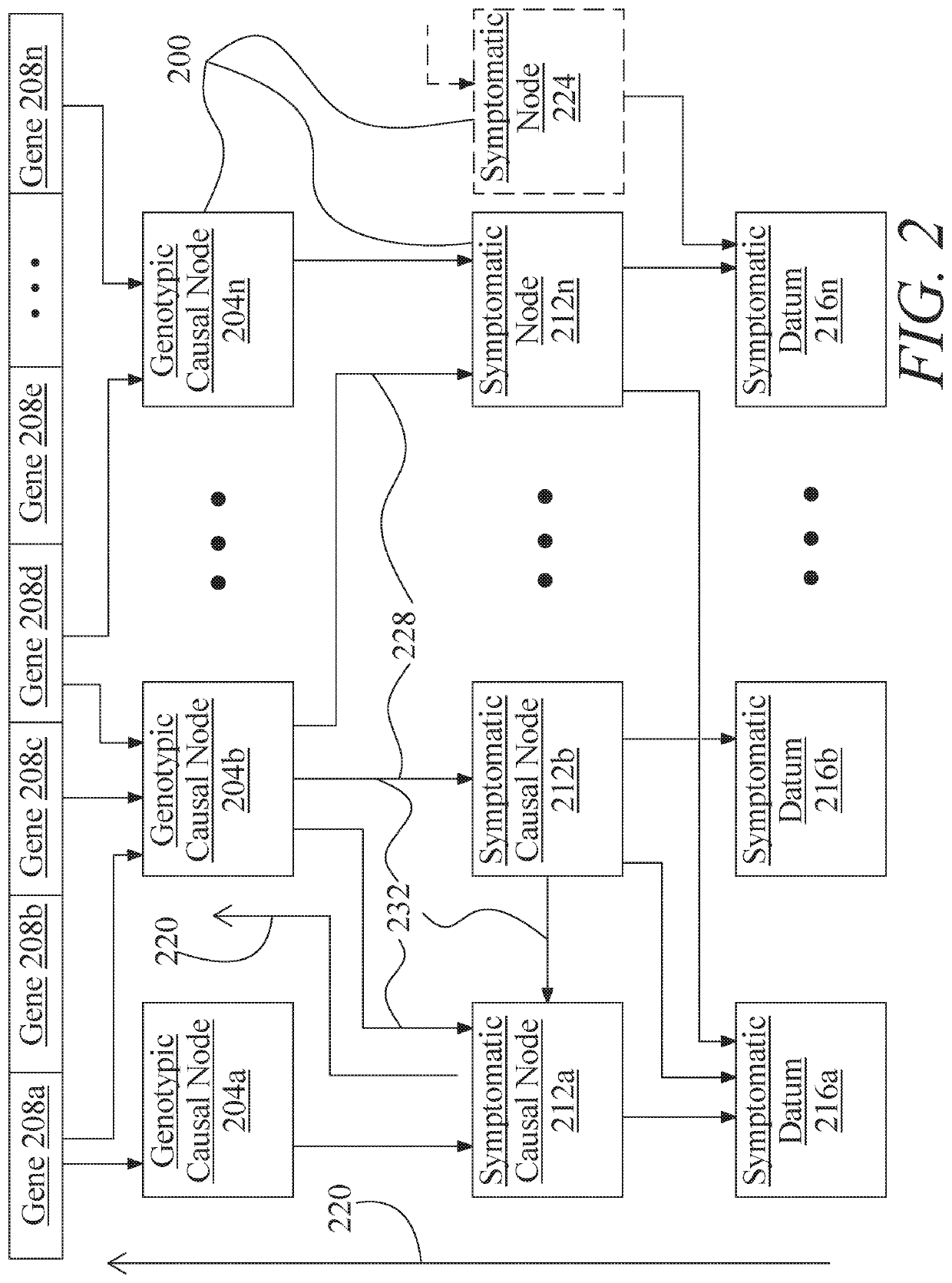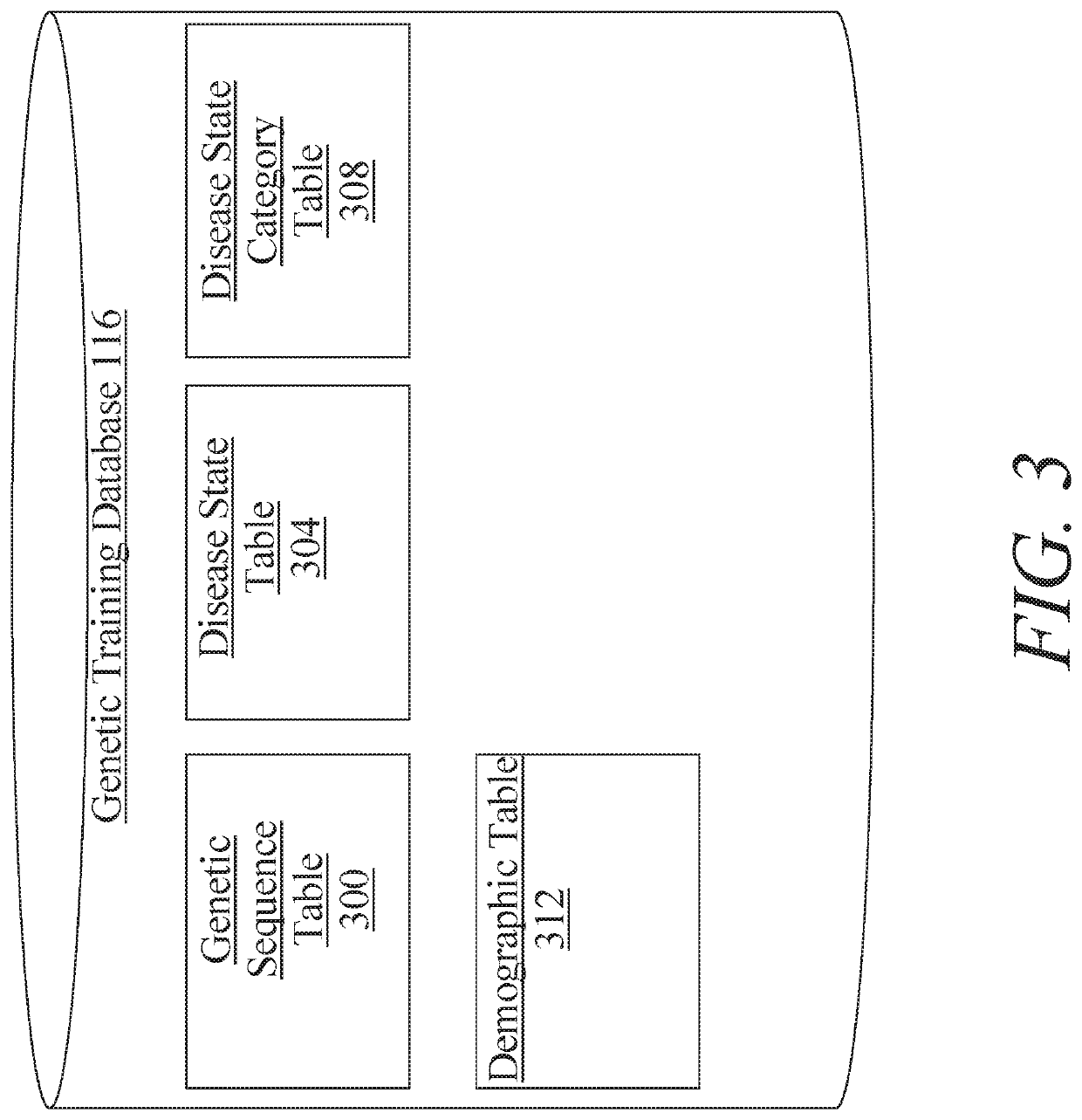Systems and methods for generating a genotypic causal model of a disease state
a genotypic causal model and disease technology, applied in the field of artificial intelligence, can solve the problems of combinatoric explosion in possible correlations, difficult situation of genetic sequencing data, and inability to discover root cause information relating to particular conditions
- Summary
- Abstract
- Description
- Claims
- Application Information
AI Technical Summary
Benefits of technology
Problems solved by technology
Method used
Image
Examples
Embodiment Construction
[0016]Embodiments disclosed herein use feature learning algorithms to identify likely causal relationships between genetic data and disease states, as well as likely causal relationships between disease states and symptoms. Such relationships are organized into a graph where causal relationships are represented using paths through the graph. This may enable complex relationships between genetics, disease states, and symptoms that were previously hidden to be generated and utilized for diagnostic and / or analytical purposes in a computationally parsimonious manner.
[0017]Referring now FIG. 1 an exemplary embodiment of a system 100 for is illustrated. System 100 includes a computing device. Computing device 104 may include any computing device as described in this disclosure, including without limitation a microcontroller, microprocessor, digital signal processor (DSP) and / or system on a chip (SoC) as described in this disclosure. Computing device 104 may include, be included in, and / or...
PUM
 Login to View More
Login to View More Abstract
Description
Claims
Application Information
 Login to View More
Login to View More - R&D
- Intellectual Property
- Life Sciences
- Materials
- Tech Scout
- Unparalleled Data Quality
- Higher Quality Content
- 60% Fewer Hallucinations
Browse by: Latest US Patents, China's latest patents, Technical Efficacy Thesaurus, Application Domain, Technology Topic, Popular Technical Reports.
© 2025 PatSnap. All rights reserved.Legal|Privacy policy|Modern Slavery Act Transparency Statement|Sitemap|About US| Contact US: help@patsnap.com



